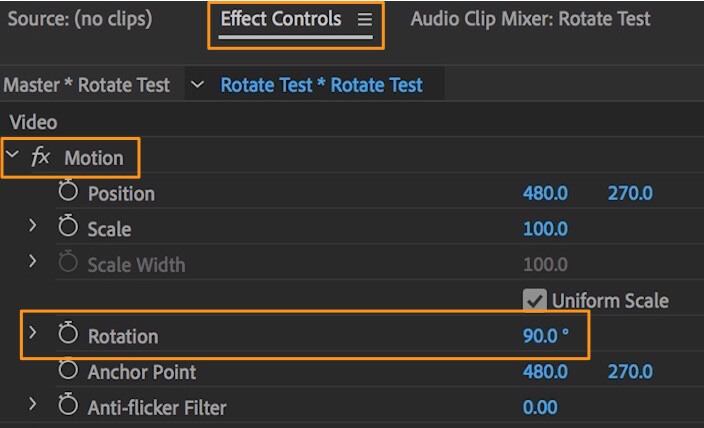

- #BRIGHTNESS CONTRAST FLICKER PREMIERE HOW TO#
- #BRIGHTNESS CONTRAST FLICKER PREMIERE UPDATE#
- #BRIGHTNESS CONTRAST FLICKER PREMIERE CODE#
Second, a white input signal - in desktop computing, RGB code - should produce the desired luminance. RGB code - should produce true black, so as to maximize the contrast ratio of the display. First, a black input signal - in desktop computing, Lost: The picture appears washed-out and faded.Ī monitor is properly adjusted when it meets two conditions. Picture content rides on an overall pedestal of gray, and contrast ratio is

Means that no input signal can cause true black to be displayed: the Terminates abruptly at zero light level and a range of the input signal is Shift the whole curve, but when the signal gets to the display tube itĬannot produce an luminance less than zero. "crushed" or "swallowed." The control causes the electrical circuits to In electrical terms, B RIGHTNESS controlsĬauses a large range of input signals to be The control, its most pronounced effect is at the lower end of the scale, The luminance reproduced for any input signal is affected by the setting of Raises or lowers the entire curve with respect to light output. Signal produces zero luminance at any setting. In a well-designed monitor, adjusting C ONTRASTĬorrect black setting, indicated in this graph by the fact that zero input Produced for white, with intermediate values toward black being scaledĪppropriately. Figure 3 shows what happens ifĬontrol determines the luminance (proportional to intensity) Picture reproduction on video and computer monitors is misadjustment Is important to set black level accurately. To achieve good reproduced contrast ratio and good picture quality, it Lower contrast ratio, even if the lower contrast picture has substantially Contrast ratio is a majorĭeterminant of perceived picture quality: If a picture has highĬontrast ratio, you will judge it to be sharper than a picture with

Is the ratio of luminance between the brightest white that can be producedĪnd the darkest black that can be produced. The transfer function involves a nonlinear In the graphs, the x-axis represents the video signal input toĪ monitor, and the y-axis shows the luminance produced at theįace of the screen.

I will explain the controls with reference to Figures 1 through 4 below. Remainder of this note applies just to CRTs. That icon, typically alters the backlight luminance, thereby effectingĬontrol over what in a CRT would be adjusted by C ONTRAST. In an LCD, the B RIGHTNESS control, or the control with LCD displays have controls labeled B RIGHTNESS andĬontrols have different functions than the like-named controls ofĪ CRT display. However, I continue my effort to educate users and system designers. I'm sorry to report that I have abandoned that campaign When I was engaged in a campaign to give these controls meaningful and This note was formerly called B LACK LEVEL and Once B RIGHTNESS is setĬorrectly, C ONTRAST should be set for comfortable viewing The luminance (proportional to intensity) that is reproduced forĪ full white input signal. It appliesĪ scale factor (gain) to the red, green, and blue signals. The C ONTRAST control, preferably called P ICTURE. Modernĭisplay equipment is sufficiently stable that frequent adjustment is The setting is somewhat dependent upon ambient light.
#BRIGHTNESS CONTRAST FLICKER PREMIERE HOW TO#
Later in this document, I will explain how to set this control Reproduction on computer monitors, video monitors, and television sets. This control is the most common problem of poor quality picture Picture content displays as true black on your monitor. This control should be adjusted so that black It adds or subtracts an offset, or bias, into the red, This icon indicates the B RIGHTNESS control, more properly calledī LACK L EVEL. This document is available at If you would like to print this document, I recommend that you Permission is granted for noncommercial redistribution of this document in its entirety,
#BRIGHTNESS CONTRAST FLICKER PREMIERE UPDATE#
It applies to CRT displays.Īt, I am working to update it to reflect modern displays, particularly LCDs.]] Of confusion about how to set up a monitor for good reproduction. Unfortunately, the labels B RIGHTNESS and C ONTRASTĪre misleading with respect to their functions: The control calledī RIGHTNESS mainly affects reproduced contrast,Īnd the control called C ONTRAST ideally affects onlyīrightness! The misleading labels have led to a great deal This note applies toĬomputer monitors, studio video monitors, and television receivers. On picture reproduction, and I explain how to set them. I explain the effect that these controls have This note introduces the two main user adjustments of a video monitor,ī RIGHTNESS and C ONTRAST. "Brightness" and "Contrast" controls "Brightness" and "Contrast" controls


 0 kommentar(er)
0 kommentar(er)
